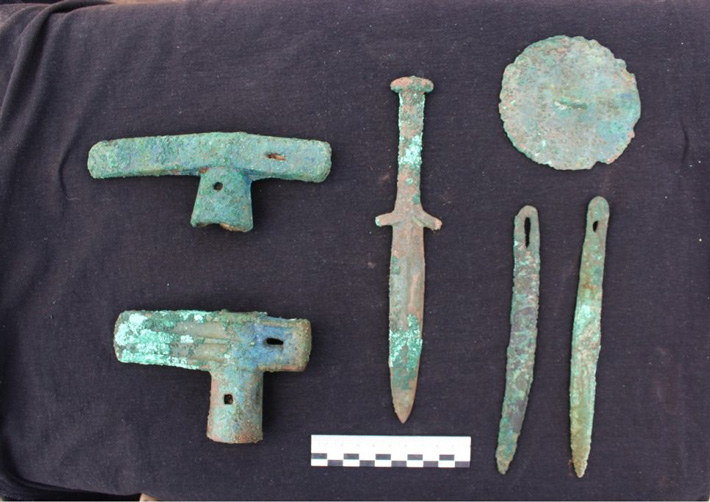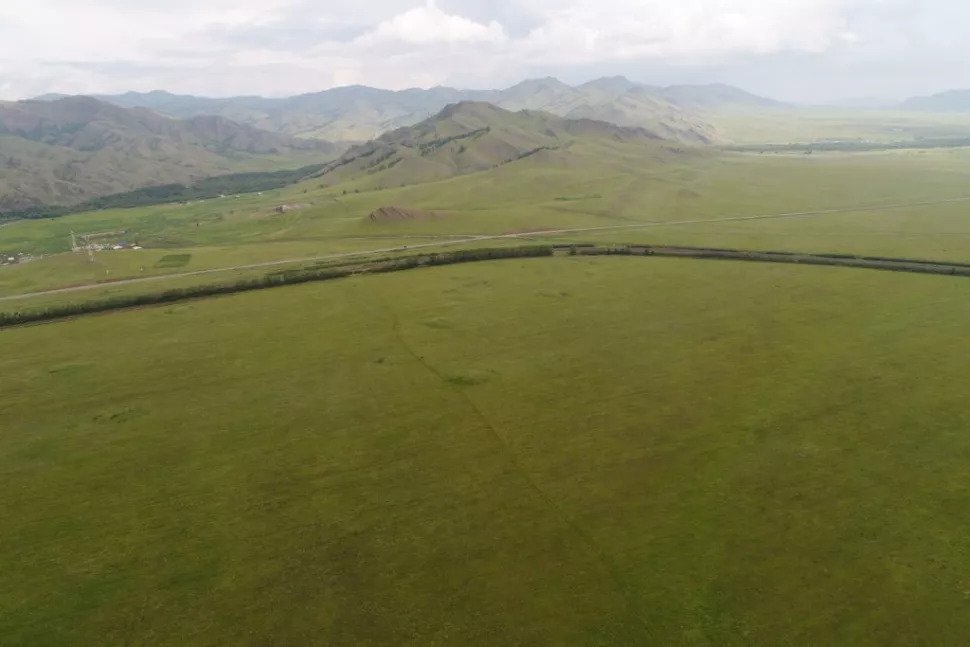Scythian Grave Unearthed in Southern Siberia
A 2,500-year-old grave has been discovered in Siberia by archaeologists, with the remains of four people of ancient Tagar culture — two guerrillas including two warriors, a male and female — and a stash of their metal weaponry.

The early Iron Age burial contained the skeletal remains of a Tagarian man, woman, infant, and older woman, as well as a slew of weapons and artifacts, including bronze daggers, knives, axes, bronze mirrors, and a miniature comb made from an animal horn, according to the Siberian Branch of the Russian Academy of Sciences.
The Tagar culture, a part of the Scythian civilization (nomadic warriors who lived in what is now southern Siberia), often buried its dead with miniature versions of real-life objects, likely to symbolize possessions they thought were needed in the afterlife. In this case, however, the deceased was laid to rest with full-size objects, the archaeologists said.
It’s not yet clear how these individuals died, but perhaps an illness caused their deaths, the archaeologists said.
A team from the Institute of Archaeology and Ethnography found the burial in the southern part of Khakassia, a region in Siberia, ahead of construction work on a railroad.
The finding is remarkable, given that grave robbers have looted most known Tagarian graves, Yuri Vitalievich Teterin, head of the excavation, said in a statement. (Of note, this culture is different than the fictional “Targaryen” dynasty from the TV drama “Game of Thrones.”)
The remains of the man and woman, who likely died in their 30s or 40s, were laid down on their backs, with large ceramic vessels next to each of them. The man also had two sets of weapons (two bronze daggers and two axes), and the woman had one set, according to the statement.
The woman’s weapons, including a long-handled instrument, perhaps a hatchet or battle ax, were an unusual find; the Tagarians often buried their women with weapons, but those were usually long-range weapons, such as arrowheads, noted Oleg Andreevich Mitko, a leader of the excavation and head of archaeology at Novosibirsk State University in Russia.

The infant’s remains were in bad shape, the archaeologists found.

“The remains of a newborn baby, no more than a month old, were also found in the burial, but fragments of its skeleton were scattered throughout the grave, possibly as a result of the activity of rodents,” Olga Batanina, an anthropologist at the Paleodata laboratory of natural scientific methods in archeology, said in the statement.
At the man and woman’s feet, lay the remains of an older woman of about 60 years of age; her body was positioned on her right side, with her knees bent. Next to her, archaeologists found a small ceramic vessel and a comb with broken teeth.
It’s unclear how these people were related to one another, but a forthcoming DNA analysis may reveal whether they had family ties.
The Tagar culture lasted for about 500 years, from about the eighth to the third centuries B.C.; its people were spread across the Minusinsk Basin, a landscape that is a mix of the steppe, forest-steppe, and foothills, according to the statement.
The archaeologists have a busy schedule ahead of them. Survey work in 2019 revealed more than 10 archaeological sites, nine of which were directly in the railroad’s development zone. This excavation is just one of those sites.





